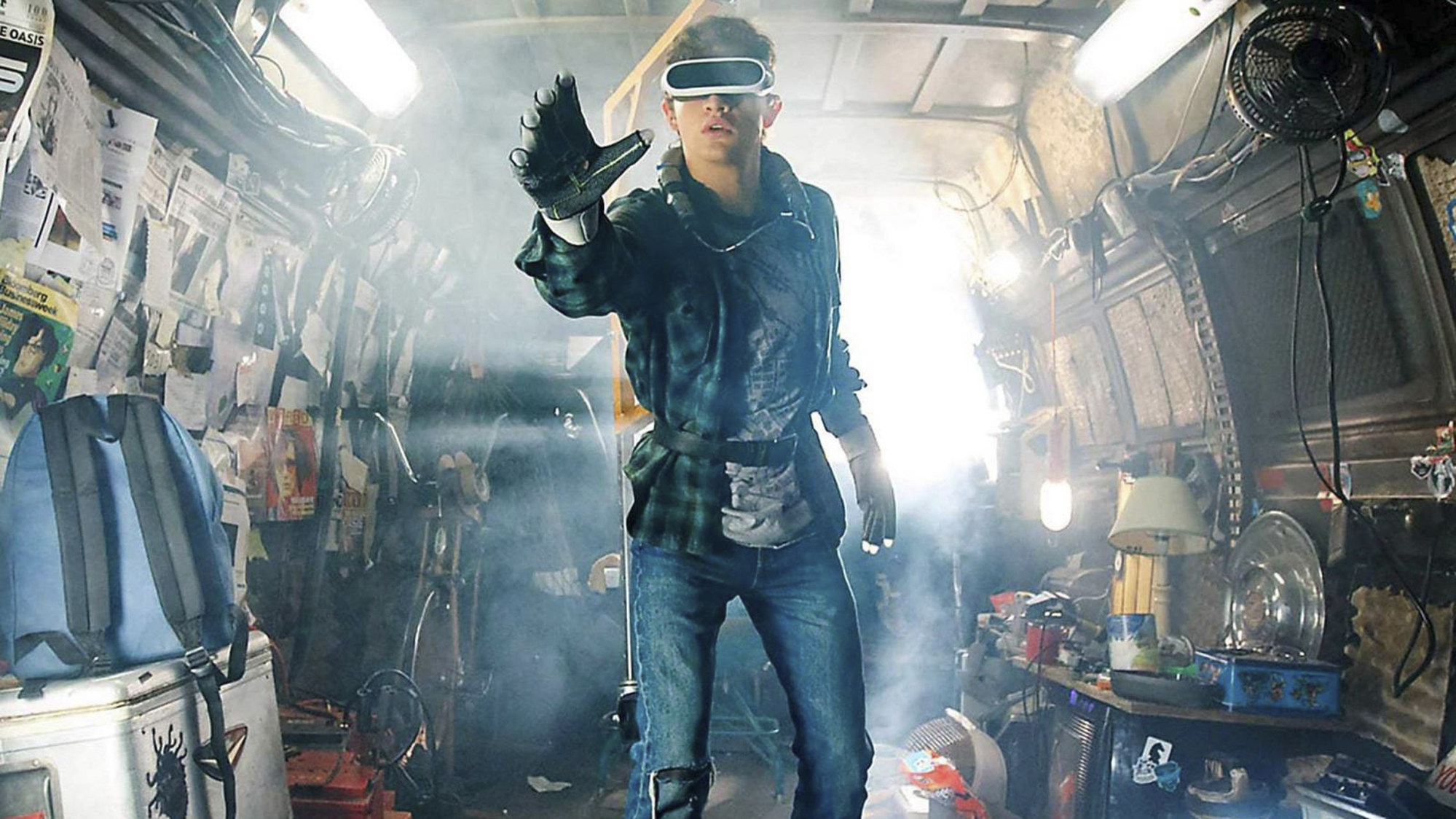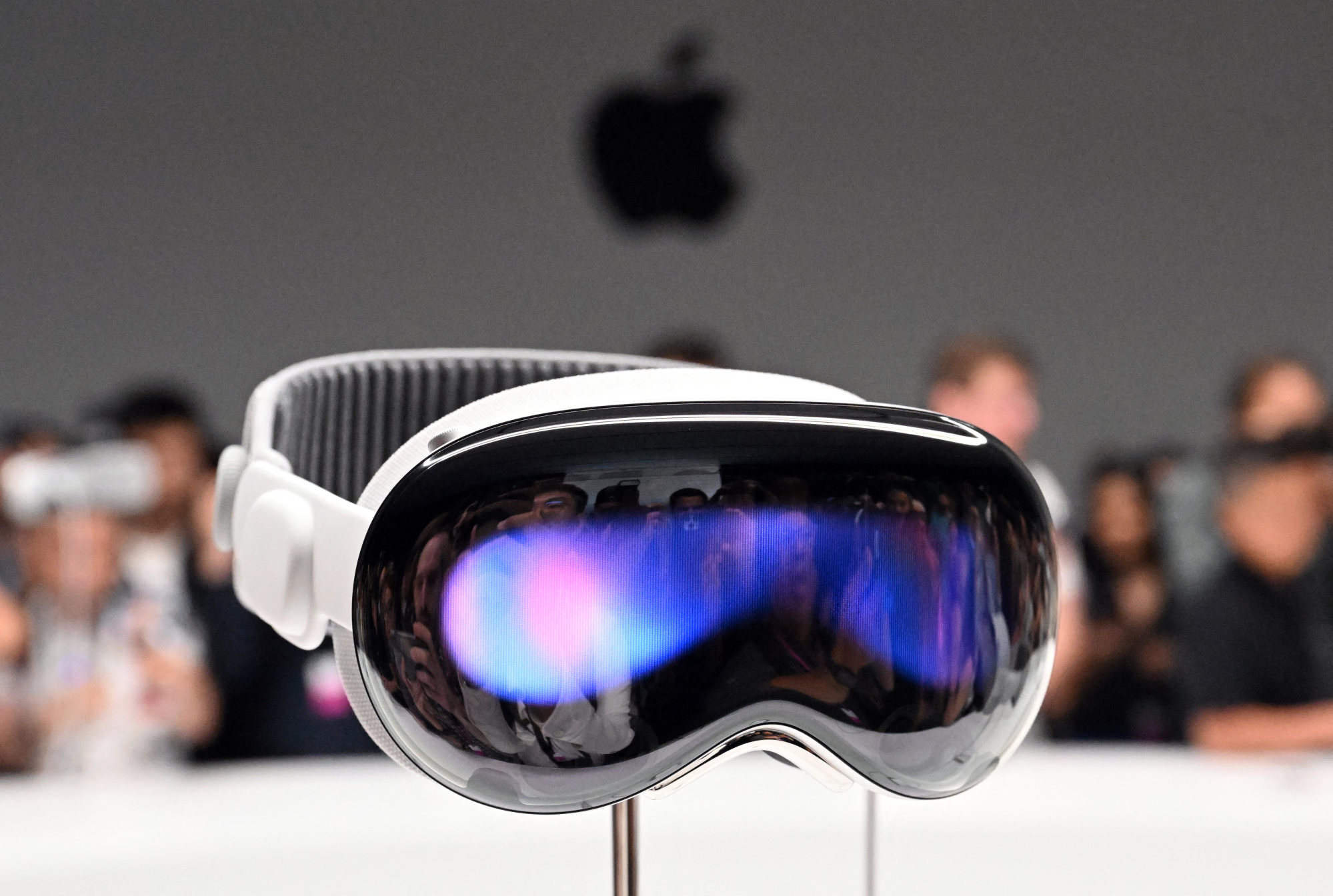
What’s the point of the Apple Vision Pro AR headset? To prime Disney creators and others to come up with uses for us consumers, experts say
- Augmented reality headsets like the Apple Vision Pro have yet to wow consumers, who don’t see compelling uses for them to justify their price
- Apple hopes to change that by offering immersive Disney features, but the headset’s true target may be Disney developers, who could bring new offerings to fans
When Apple announced its long-awaited augmented reality (AR) headset, Vision Pro, early in June 2023, part of the pitch was that these goggles – reminiscent of those in 2018 sci-fi film Ready Player One – would change how we consume entertainment.
With Walt Disney chief executive Bob Iger on hand to show off immersive new features in entertainment and sports, it seemed like two of the best-known brands in the media world were placing their bets on augmented and virtual reality (VR).
Having content from Hollywood studios such as Disney has long been seen as a way to take the VR business mainstream after years of false starts. Part of the reason pricey VR headsets have failed is the lack of compelling stuff for customers to play with.
“Without content, it’s a mansion with no furniture,” says Dan Ives, a managing director and tech analyst at investment firm Wedbush Securities.

“When I watch Ted Lasso, I want to watch it with my wife, sharing the same screen,” says Wagner James Au, the author of the forthcoming book Making a Metaverse That Matters.
Vision Pro does have utility, Au says, but it seems geared more towards productivity than entertainment. The ideal user might be a Disney employee, not a Disney fan.
The tech giant needs media brands, entertainment studios and software developers to start getting on board with this tech so that when customers become interested, there is a wealth of AR-exclusive content waiting for them.

“I don’t think it’s a general consumer product right now,” says Brandon Ross, partner and tech analyst at the research firm LightShed Partners.
Just as it was the iPhone’s vast third-party app store that rocketed those devices into the mainstream, he says, Vision Pro “is being put out there to start to develop an app ecosystem around it”.
Disney could eventually use the technology to bring new offerings to fans, allowing interactions with Mickey Mouse in living rooms or adding virtual flourishes to in-person experiences at theme parks.

The House of Mouse is uniquely suited for adopting this technology, says Matthew Ball, an investor and the author of The Metaverse: And How It Will Revolutionise Everything, pointing to the brand’s partnerships with the video game Fortnite, as well as its innovations in theme park and animation technology.
“Among all media companies, Disney’s IP has the most intuitive appeal” in AR and VR, Ball says. “For decades, children and adults have imagined themselves inside the world of Star Wars or Marvel … Disney’s parks are proof of this.”
By uncoupling a park such as Disneyland from constraints such as ride capacity, operating hours or the laws of physics, he continues, this technology could enable new, immersive ways of capitalising on Disney’s intellectual property.
But so far it is not clear what added value the average viewer would get from ditching their television set to go all-in on Vision Pro, says Amy Webb, chief executive of the Future Today Institute, a consulting firm.
Unless Disney secretly has a whole new category of AR-specific media up its sleeve, she asks: “What is this going to provide that is significantly better than the current TV viewing experience?”

“I just wonder if Apple is envisioning a world where the two-dimensional screen kind of goes away, and the first version of this product is meant to help cross that bridge,” Webb says. Apple did not respond to a request for comment. Disney did not make executives available to comment.
The entertainment world is littered with attempts to make AR/VR headsets a thing.

Data suggests that interest in AR and VR headsets slumped in 2022. American teens expressed low interest in the tech earlier this year.
“When we were most excited about VR and AR, we had at least four different manufacturers of headsets, none of which had significant penetration into the market,” says Jay Tucker, executive director of UCLA Anderson’s Centre for Management of Enterprise in Media, Entertainment and Sports in the US state of California.
“Imagine trying to create a virtual reality experience. How much would you invest in that, knowing that your audience is the subset of people who bought [one] particular headset?”

